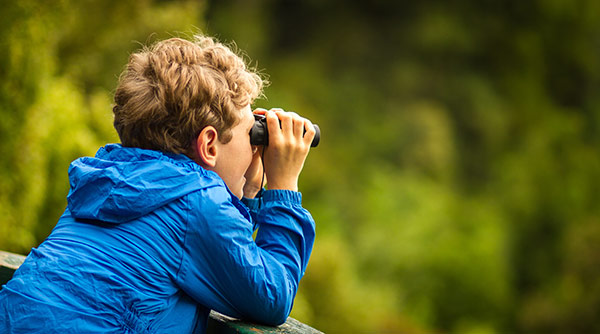There are animals that will move in your wild garden, especially at night. This is in practice a feature common to many mammals that tend to move with darkness, both because for some it is the best time to look for food, and because it is the one in which man moves less. As we said, the phototrap is a precious ally to observe their behaviour.
What instrument can we use instead to observe who lives and hangs around the wild garden during the day, and that allows us at the same time not to get too close to not scare him?
Here comes into action a tool that surely you all already know, and maybe you have at home: the binoculars!
The binoculars are the optical observation instrument, whose peculiarity is to magnify what surrounds us and, in many cases, to lighten what is being observed, allowing us to capture details that otherwise we would not be able to see with the naked eye. Also, as the term itself suggests, binoculars means "two eyes", so we will have the enlarged vision of what we are looking for both our eyes.
There are many types and sizes for sale, from those that allow you to enlarge an image less than 5 mt from you, to those that make you see all the details of something that is more than 500 mt away. You will need to purchase the most suitable model depending on what you want to observe with binoculars. To observe the fauna in your wild garden, it will be good, for example, a 7x50 binoculars, where the first number indicates the magnifications, the second the diameter of the objective.
All the binoculars are equipped with the possibility of focusing: normally they have a sort of small wheel at the centre between the two eyepieces, which if moved makes the images sharper according to your optical parameters, that is, your eyesight.
But such technology is used to observe who? The binoculars are used to observe all the fauna, keeping at distance from it, and it is certainly the main tool of the birdwatcher. And who is this? It’s simple: who watches the birds. To practise bird-watching, you don’t have to be a bird expert, you also have to be a simple nature lover and curious! You could observe the blackbird as it moves among the shrubs of your wild garden looking for fruits, or the blue tit as it comes out of the nest box that you have built it, looking for food for its young. Also take a notebook where you can write down your observations, and a guide on birds, which will allow you to recognize the species less familiar to you.
